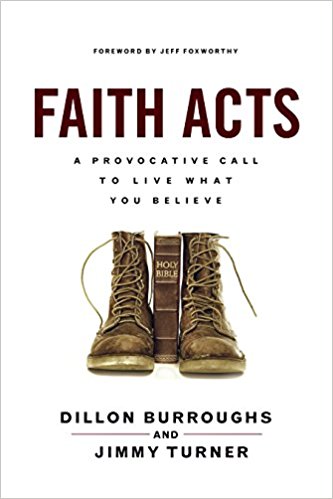Homelessness In Depth: Best Books & Local Reports
Homelessness in Depth: Best Books & Local Reports
Books
Highly Recommended
Many authors present in-depth insights on all aspects of homelessness, from one woman’s personal account of homelessness to general perspectives. The first part observes changes and trends in the homeless population over the last three decades. The second part describes two contrasting program approaches, Pathways’ Housing First and Portland, Oregon’s Central City Concern with its Alcohol & Drug Free Community (ADFC) model. Later sections analyze why the US has not made more progress, with suggested pathways.
The co-authors were moved to put their faith into action and apply the Bible to the needs of their city. Although Chattanooga, TN was ranked the most “Bible minded” city by Barna and had 1,000 well attended churches, this religiosity did not seem to impact the situation of the city’s hundreds of homeless individuals. In response to these observations and their reading of the book of James, the authors started an outreach ministry which led to outdoor churches and ministries in 60 locations among homeless people in Chattanooga.
This Pulitzer and MacArthur Genius Grant winning book reveals one of the pathways leading to homelessness through the real life stories. A Boston Foundation study found that 23% of families applying for emergency shelter assistance gave the reason for their need as eviction or threatened eviction. Preventing homelessness requires an understanding of the factors and dynamics leading to housing evictions, and this book is an excellent place to start learning.
Dr. O’Connell shares stories and experiences of his work with individuals affected by homelessness in Boston. He is the founding physician of the Boston Health Care for the Homeless Program, which now serves thousands of people each year.
Other Recommended Books
This book looks at more than just the physical and socio-economic aspects of homelessness. It is a deeper book which also critiques western culture, considers other types of “homelessness,” and reflects theologically on the concept of home.
Although this book does not deal directly with homelessness, it is still relevant because it covers related issues like poverty, wealth inequality, job readiness, health, and financial education. A major part of the book deals with poverty and how some efforts to alleviate it have negative and counterproductive impacts. The authors are right in recommending Asset Based Community Development as a useful approach for long term results.
This is one of the best books on the Housing First approach to ending chronic homelessness since one of the authors, Sam Tsemberis, was its originator. Housing First seeks “to provide immediate access to housing and an envelope of support services to individuals living on the streets” (viii), which is in contrast to “housing ready” or “staircase models” requiring people to meet certain requirements before moving through a progression of housing options. The book describes several approaches to address homelessness and explains the theory and history of Housing First. It also presents research evidence supporting the approach. For example, when Boston’s Pine Street Inn tried a pilot Housing First program, 86% of the chronically homeless participants remained stably housed after one year. While there are some limitations and objections to Housing First, the approach has been influential and has brought about some systems changes.
The practical ideas shared by Travis Sharpe are based on the author’s experience over the years. Most of these ideas are intended for helping individuals one by one in a relational context. Typical ideas include giving haircuts, shoes, snack packs, personal hygiene packs, and eating lunch with someone. Other ideas extend to help in finding a job and connecting to community resources. Although these acts of kindness do not address the deeper roots of homelessness, they are one avenue of Christian ministry that God can use. The author is the founder of an organization called Unsheltered International.
Reading about and listening to the life stories of individuals who are homeless is important, but understanding a historical perspective on homelessness in America is also valuable. Wagner’s book is primarily a history of efforts to reduce or end homelessness. The author covers attitudes toward those who were homeless, advocates’ protests, programs providing services, and efforts to raise money and awareness. Although the book looks briefly at some social theories, it does not focus on future solutions or policy proposals.
An account of the experiences of two young Christian men who spent five months living homeless on the streets in several cities across the country and the homeless individuals they meet. While no doubt this book could be critiqued on several levels, the observations and reflections of the author can still be helpful for people who have had little exposure to homelessness.
Reports
Boston Area
Boston’s Way Home: An Action Plan to End Veteran and Chronic Homelessness
2015-2018 Plan (select "Find out more about our plans")
City of Cambridge 2016 Census of Persons Experiencing Homelessness
State of Massachusetts
The Boston Foundation Report on Family Homelessness. Rog, Debra J., Kathryn A. Henderson, Andrew L. Greer, Kathryn M. Kulbicki, Linda Weinreb, The Growing Challenge of Family Homelessness: Homeless Assistance for Families in Massachusetts: Trends in Use FY2008-FY2016. Boston: The Boston Foundation, 2017.
This report seeks to help the reader “understand the changes in the growth and composition of the homeless family population …and the nature of families’ experiences in the Emergency Assistance programs” (11). It can help inform efforts to prevent and reduce family homelessness and help measure progress. The report documents family homelessness from 2008 to 2016, a period when over 33,000 families with over 100,000 individuals received shelter through the Massachusetts Emergency Assistance Program (7). The study looked at how long families are staying in shelters, finding the length of stay increased from an average of 247 days in 2008 to 360 days in 2016 (8). During that period the number of families in shelters increased 93% (11), although recent data indicate a hopeful decline in 2016. Churches can directly help prevent families from becoming homeless, but they should also be aware of state assistance programs they can refer people to. This report focuses on two of these programs: (1) Residential Assistance for Families in Transition (RAFT), which provides financial support and services to prevent homelessness, and (2) HomeBASE, which provides help in finding alternatives to entering a shelter or stabilization after being in a shelter.
For those who want to learn about and have a voice in policy decisions, the Coalition is a good entry point and source of current statistics and facts.
Report on Unaccompanied Homeless Youth in Massachusetts: “Massachusetts Youth Counts 2016”.
This report surveyed 502 homeless youth and provides information on where they were staying, what the reasons were for their homelessness, and the kinds of services they need. By the Massachusetts Commission on Unaccompanied Homeless Youth
National
2017 Annual Homeless Assessment Report (AHAR) to Congress
The Annual Homeless Assessment Report (AHAR) is a report to the U.S. Congress on the extent and nature of homelessness in the United States. It provides counts of people experiencing homelessness and describes their demographic characteristics and service use patterns. It has become the central resource for national data on homelessness, used by federal, state, and local policymakers to understand trends in homelessness and inform their policies. The AHAR is based on local data from Point-in-Time (PIT) counts, Housing Inventory Counts (HIC), and Homeless Management Information Systems (HMIS).







![Homelessness & Collaboration: Starlight Ministry [VIDEO]](https://images.squarespace-cdn.com/content/v1/57ff1c7ae58c62d6f84ba841/1523389821793-ZWG4LOT4ZTF83A6JKKS1/Cynthia+Starlight+Video+HiDef.png)







![Street Involvement As A System [infographic]](https://images.squarespace-cdn.com/content/v1/57ff1c7ae58c62d6f84ba841/1506610840159-GYRRV17PMQVSKQWTKDX8/street+involved.jpeg)